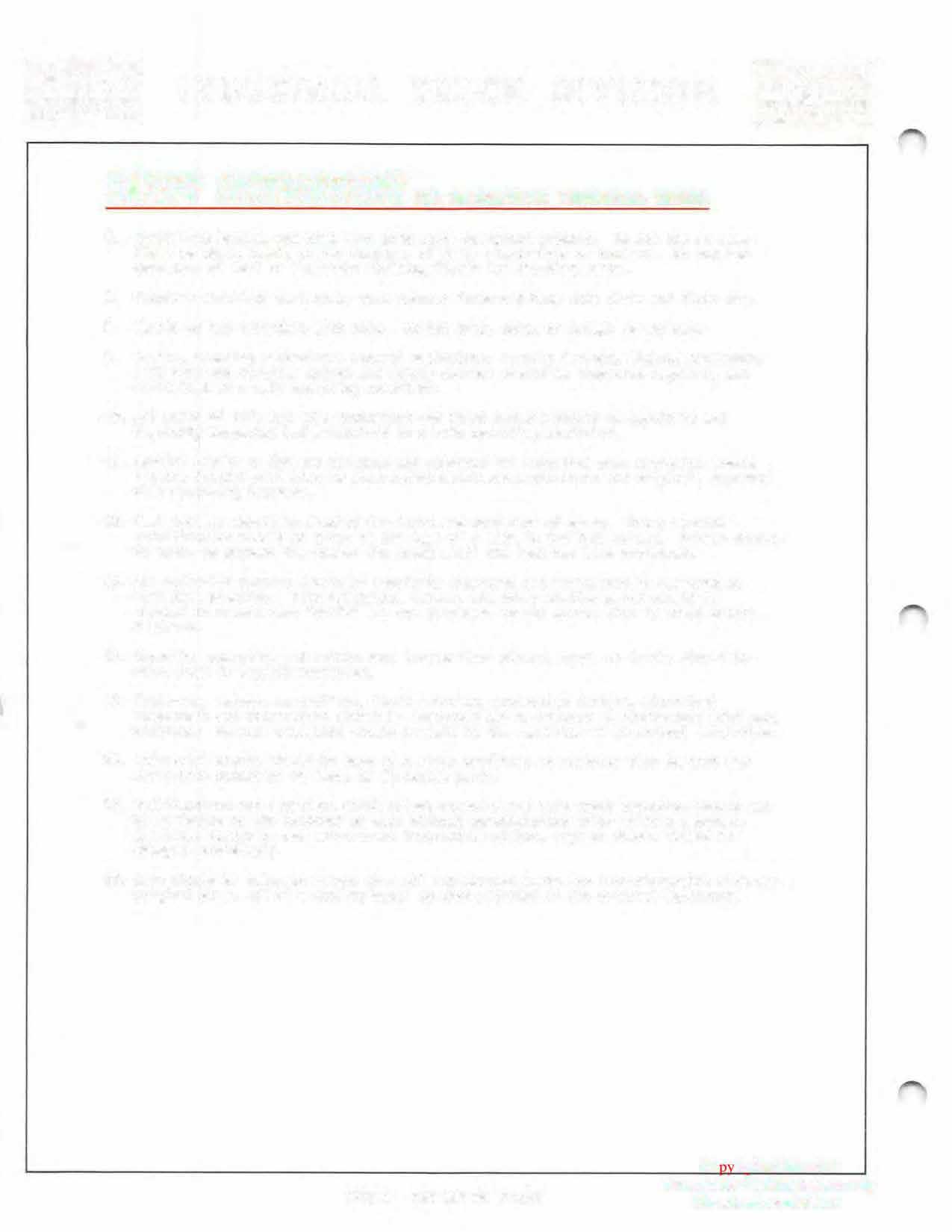
2 minute read
Before Working On Truck
r:rr;rn mm:tttl INDUSTRIAL
TRUCK DIVISION r:rr;rn mm:tttl
SAFETY INSTRUCTIONS FOR MAINTAINING INDUSTRIAL TRUCKS
6. Avoid fire hazards and have fire protection equipment present. Do not use an open flame to check level, or for leakage, of fuel, electrolyte or coolant. Do not use open pans of fuel or flammable cl eaning fluids for cleaning parts. 7. Properly ventilate work area, vent exhaust fumes and keep shop clean and floor dry. 8. Handle LP gas cylinders with care. Do not drop, dent, or damage in any way. 9. Brakes, steering mechanisms, control mechanisms, warning devices, lights, governors, I ift overl oad devices, guards and safety devices should be inspected regularly and maintained in a safe operating condition. 10. All parts of 1 ift and tilt mechanisms and frame members should be carefully and regularly inspected and maintained in a safe operating condition. 1 1. Special trucks or devices designed and approved for hazardous area operation should receive special attention to ensure that maintenance preserves the original, approved safe operating features. 12. Fuel systems should be checked for leaks and condition of parts. Extra special consideration should be given in the case of a leak in the fuel system. Action should be taken to prevent the use of the truck until the leak has been corrected. 13. Al l hydraulic systems should be regularly inspected and maintained in conformance with good practice. Tilt cylinders, valves, and other similar parts should be checked to assure that "drift" has not developed to the extent that it �,ould create a hazard. 14. Capacity, operation and maintenance instructions plates, tags, or decals should be maintained in legible condition. 15. Batteries, motors, controllers, 1 imit switches, protective devices, electrical conductors and connections should be inspected and maintained in conformance with good practice. Special attention should be paid to the condition of electrical insulation. 16. Industrial trucks should be kept in a clean condition to minimize fire hazards and facilitate detection of loose or defective parts. 17. Modifications and additions which affect capacity and safe truck operation should not be performed by the customer or user without manufacturers prior written approval. Capacity, operation and maintenance instruction plates, tags or decals should be changed accordingly. 18. Care should be taken to assure that all replacement parts are interchangeable with the original parts and of a quality equal to that provided in the original equipment.


